Study on the Output Performance of a Nonlinear Hybrid Piezoelectric-Electromagnetic Harvester under Harmonic Excitation
Abstract
1. Introduction
2. Nonlinear Hybrid Energy Harvester Structure
3. Vibration Responses and Output of Nonlinear Energy Harvester under Harmonic Excitation
4. Experimental Tests
4.1. Influence of Magnetic Force on the Output of Nonlinear Hybrid Harvesting Structure
4.2. Effects of Excitation Acceleration on Energy Harvesting Characteristics
4.3. Effect of Load on Energy Harvesting Characteristics
5. Conclusions
Author Contributions
Funding
Conflicts of Interest
References
- Erturk, A.; Inman, D. Broadband piezoelectric power generation on high-energy orbits of the bistable Duffing oscillator with electromechanical coupling. J. Sound Vib. 2011, 330, 2339–2353. [Google Scholar] [CrossRef]
- Tiwari, R.; Buch, N.; Garcia, E. Energy balance for peak detection method in piezoelectric energy harvester. J. Intell. Mater. Syst. Struct. 2014, 25, 1024–1035. [Google Scholar] [CrossRef]
- Ferrari, M.; Ferrari, V.; Guizzetti, M. Improved energy harvesting from wideband vibrations by nonlinear piezoelectric converters. Sens. Actuators A Phys. 2010, 162, 425–431. [Google Scholar] [CrossRef]
- Marzencki, M.; Defosseux, M.; Basrour, S. MEMS Vibration Energy Harvesting Devices with Passive Resonance Frequency Adaptation Capability. J. Microelectromech. Syst. 2009, 18, 1444–1453. [Google Scholar] [CrossRef]
- Challa, V.R.; Prasad, M.G.; Shi, Y. A vibration energy harvester with bidirectional resonance frequency tunability. Smart Mater. Struct. 2008, 17, 015035. [Google Scholar] [CrossRef]
- Kang, J.; Kim, I.; Kim, D. Wireless Information and Power Transfer: Rate-Energy Tradeoff for Nonlinear Energy Harvesting. IEEE Trans. Wirel. Commun. 2017, 7, 2787569. [Google Scholar] [CrossRef]
- Cammarano, A.; Neild, S.; Burrow, S.; Wagg, D.; Inman, D.; Wagg, D. Optimum resistive loads for vibration-based electromagnetic energy harvesters with a stiffening nonlinearity. J. Intell. Mater. Syst. Struct. 2014, 25, 1757–1770. [Google Scholar] [CrossRef]
- Li, P.; Gao, S.; Cai, H.; Wang, H. Coupling effect analysis for hybrid piezoelectric and electromagnetic energy harvesting from random vibrations. Int. J. Precis. Eng. Manuf. 2014, 15, 1915–1924. [Google Scholar] [CrossRef]
- Li, P.; Gao, S.; Cai, H. Modeling and analysis of hybrid piezoelectric and electromagnetic energy harvesting from random vibrations. Microsyst. Technol. 2015, 21, 401–414. [Google Scholar] [CrossRef]
- Lallart, M. Nonlinear technique and self-powered circuit for efficient piezoelectric energy harvesting under unloaded cases. Energy Convers. Manag. 2017, 133, 444–457. [Google Scholar] [CrossRef]
- Zhou, X.; Gao, S.; Liu, H.; Jin, L. Nonlinear Hybrid Piezoelectric and Electromagnetic Energy Harvesting Driven by Colored Excitation. Energies 2018, 11, 498. [Google Scholar] [CrossRef]
- Harne, R.; Sun, A.; Wang, K. Leveraging nonlinear saturation-based phenomena in an L-shaped vibration energy harvesting system. J. Sound Vib. 2016, 363, 517–531. [Google Scholar] [CrossRef]
- Jiang, W.A.; Chen, L.Q. An equivalent linearization technique for nonlinear piezoelectric energy harvesters under Gaussian white noise. Commun. Nonlinear Sci. Numer. Simul. 2014, 19, 2897–2904. [Google Scholar] [CrossRef]
- Green, P.L.; Worden, K.; Atallah, K.; Sims, N.D. The benefits of Duffing-type nonlinearities and electrical optimization of a mono-stable energy harvester under white Gaussian excitations. J. Sound Vib. 2012, 20, 4504–4517. [Google Scholar] [CrossRef]
- Mann, B.P.; Owens, B.A. Investigations of a nonlinear energy harvester with a bistable potential well. J. Sound Vib. 2010, 329, 1215–1226. [Google Scholar] [CrossRef]
- Foisal, A.R.M.; Hong, C.; Chung, G.S. Multi-frequency electromagnetic energy harvester using a magnetic spring cantilever. Sens. Actuators A Phys. 2012, 182, 106–113. [Google Scholar] [CrossRef]
- Simeone, L.; Tehrani, M.G.; Elliott, S.J.; Hendijanizadeh, M. Nonlinear Damping in an Energy Harvesting Device. In Proceedings of the International Conference of Noise and Vibration Engineering, Leuven, Belgium, 15–17 September 2014; pp. 1–12. [Google Scholar]
- Al-Ashtari, W.; Hunstig, M.; Hemsel, T.; Sextro, W. Frequency tuning of piezoelectric energy harvesters by magnetic force. Smart Mater. Struct. 2012, 21, 35019. [Google Scholar] [CrossRef]
- Marzencki, M.; Basrour, S.; Charlot, B.; Spirkovich, S.; Colin, M. A MEMS piezoelectric vibration energy harvesting device. In Proceedings of the Fifth International Workshop on Micro and Nanotechnology for Power Generation and Energy Conversion Applications (PowerMEMS’05), Tokyo, Japan, 28–30 November 2005; pp. 45–48. [Google Scholar]
- Challa, V.R.; Prasad, M.G.; Fisher, F.T. A coupled piezoelectric–electromagnetic energy harvesting technique for achieving increased power output through damping matching. Smart Mater. Struct. 2009, 18, 1–11. [Google Scholar] [CrossRef]
- Torsten, R.; Armaghan, S. Analysis and Modelling towards Hybrid Piezo-Electromagnetic Vibrating Energy Harvesters. AIP Conf. Proc. 2010, 81, 81–85. [Google Scholar]
- Shan, X.-B.; Guan, S.-W.; Liu, Z.-S.; Xu, Z.-L.; Xie, T. A new energy harvester using a piezoelectric and suspension electromagnetic mechanism. J. Zhejiang Univ. Sci. A 2013, 14, 890–897. [Google Scholar] [CrossRef]
- Yang, X.; Wang, Y.; Cao, Y.; Liu, S.; Zhao, Z.; Dong, G. A New Hybrid Piezoelectric-Electromagnetic Vibration-Powered Generator and Its Model and Experiment Research. IEEE Trans. Appl. Supercond. 2014, 24. [Google Scholar] [CrossRef]
- Karami, M.A.; Inman, D.J. Equivalent damping and frequency change for linear and nonlinear hybrid vibrational energy harvesting systems. J. Sound Vib. 2011, 330, 5583–5597. [Google Scholar] [CrossRef]
- Hamdi, M.; Belhaq, M. Energy Harvesting in a Hybrid Piezoelectric-Electromagnetic Harvester with Time Delay, Recent Trends in Applied Nonlinear Mechanics and Physics. Springer Proc. Phys. 2017, 199, 69–83. [Google Scholar]
- Owens, B.A.M.; Mann, B.P. Linear and nonlinear electromagnetic coupling models in vibration-based energy harvesting. J. Sound Vib. 2012, 331, 922–937. [Google Scholar] [CrossRef]
- Department of Mathematics, Tongji University. Higher Mathematics; High Education Press: Beijing, China, 2007. [Google Scholar]
- Spreemann, D.; Manoli, Y. Electromagnetic Vibration Energy Harvesters; Springer: Berlin, Germany, 2012. [Google Scholar]
- Liu, Y.; Chen, L. Nonlinear Vibration; Higher Education Press: Beijing, China, 2001. [Google Scholar]
- Chen, Y. Nonlinear Vibration; Tianjin Science and Technology Press: Tianjin, China, 1983. [Google Scholar]
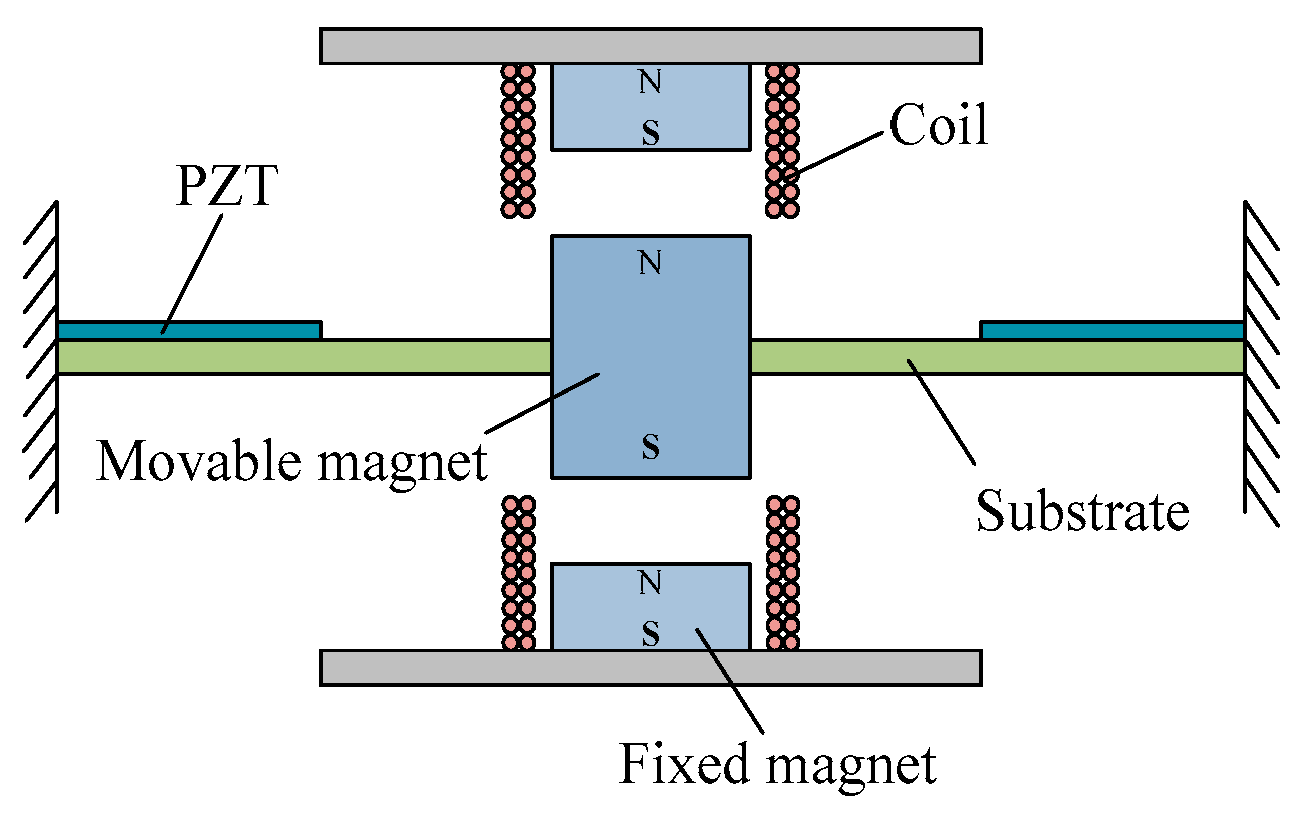
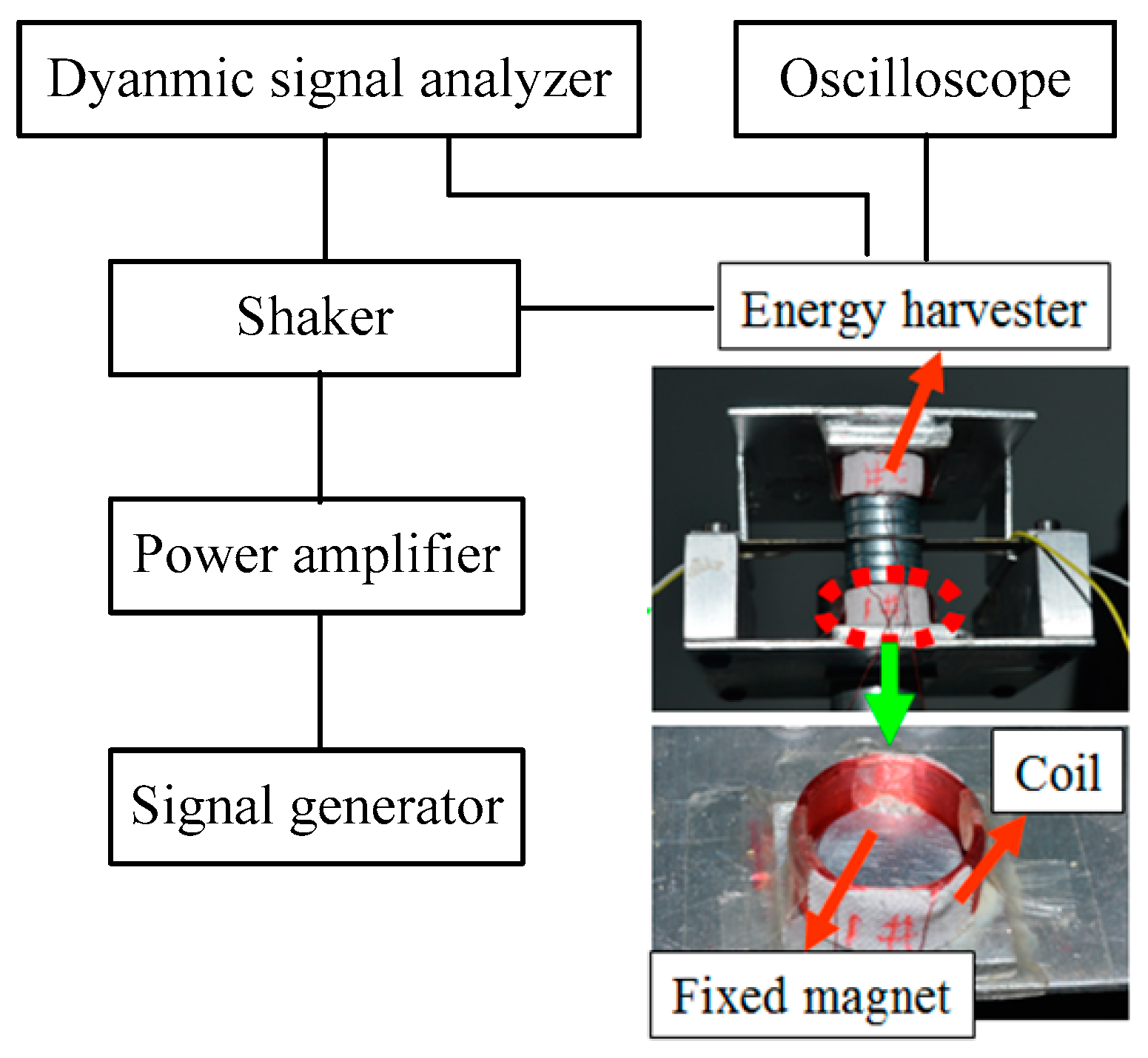
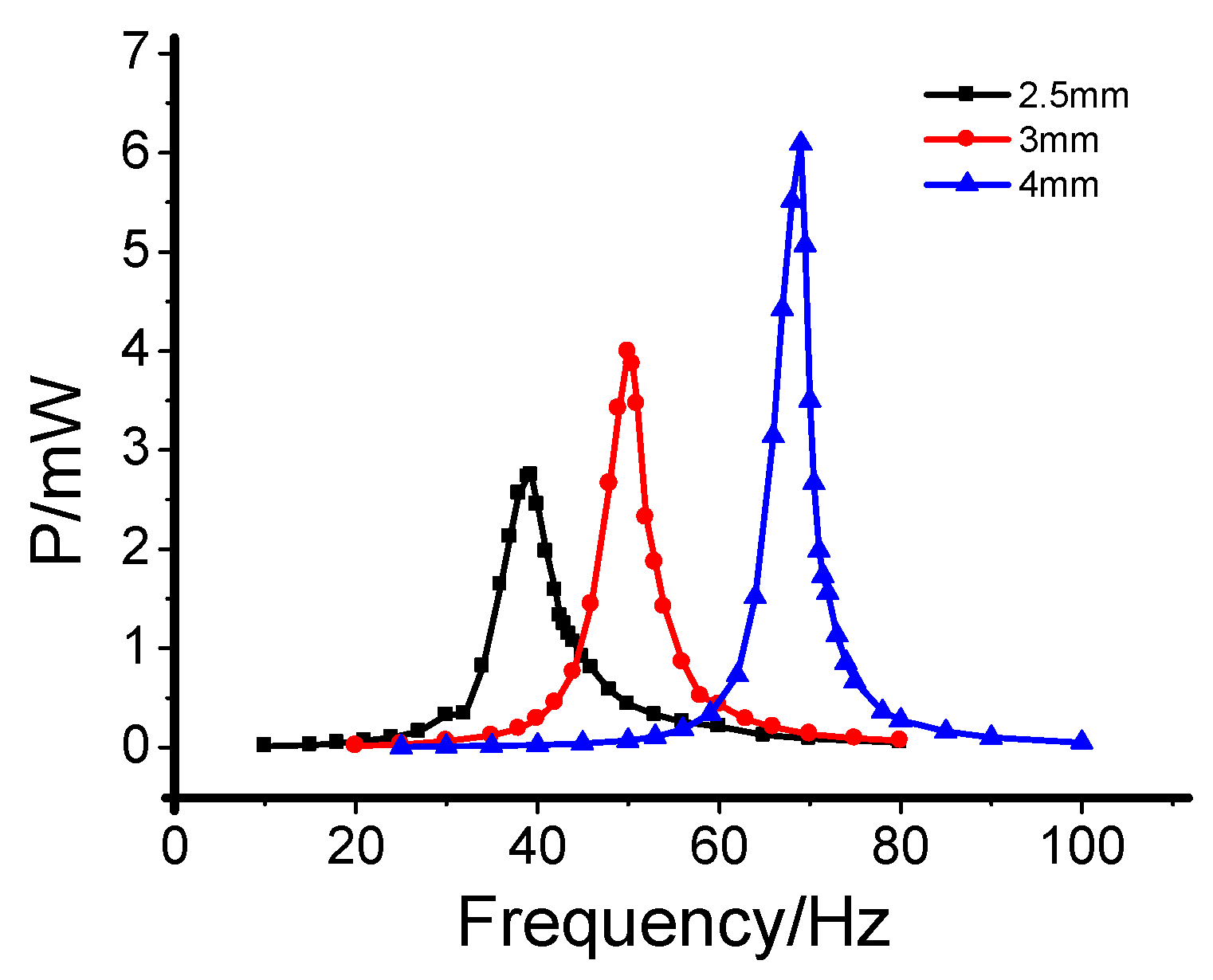
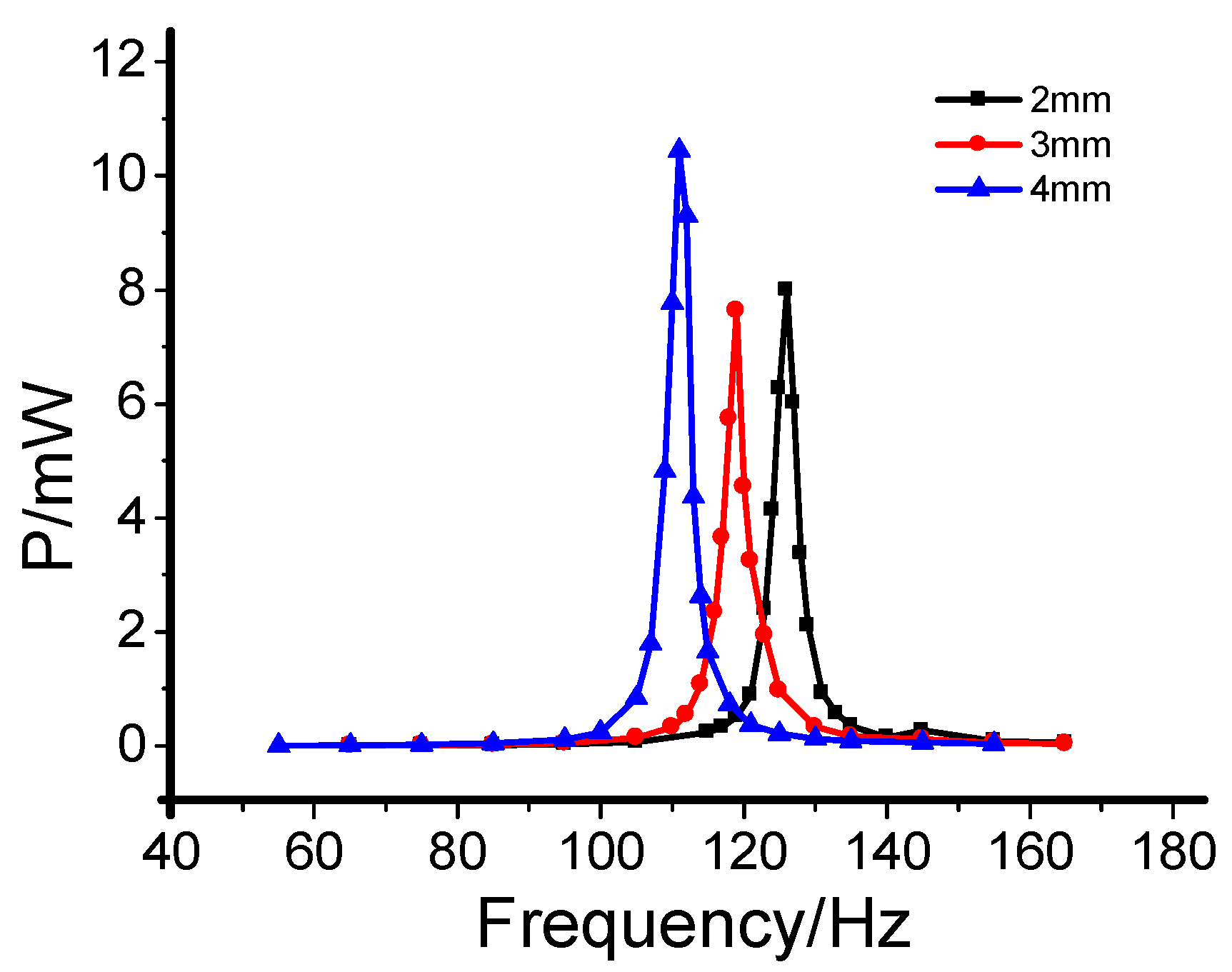
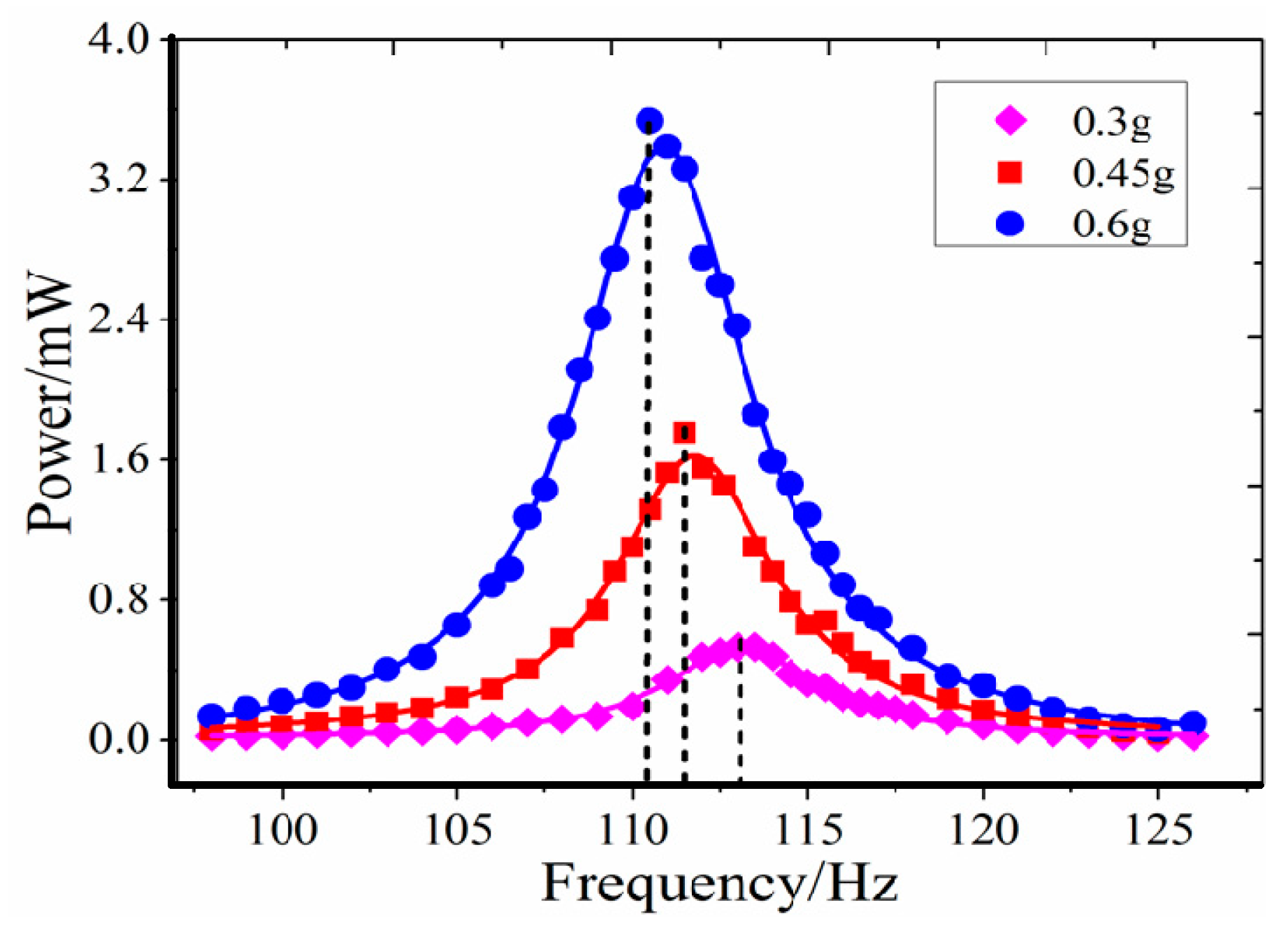
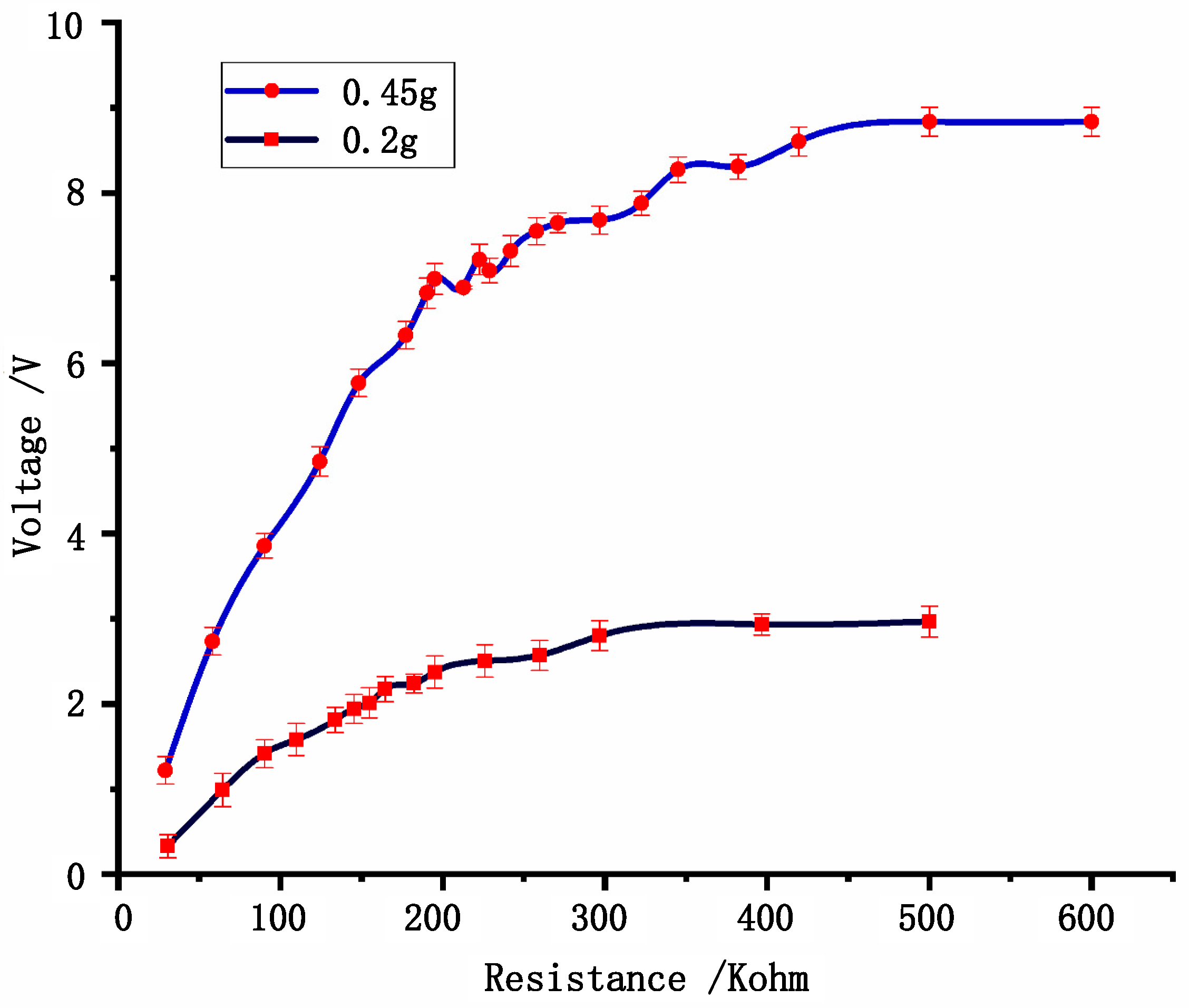
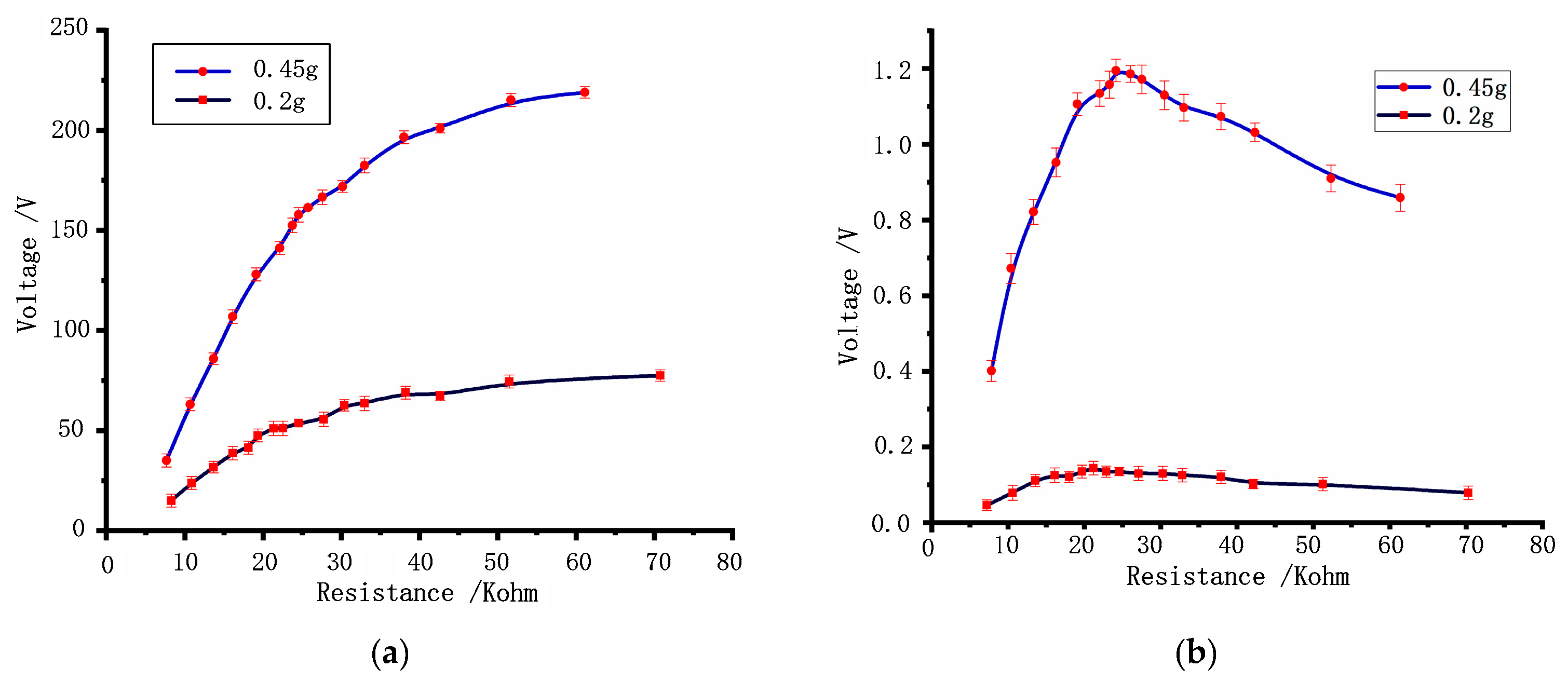

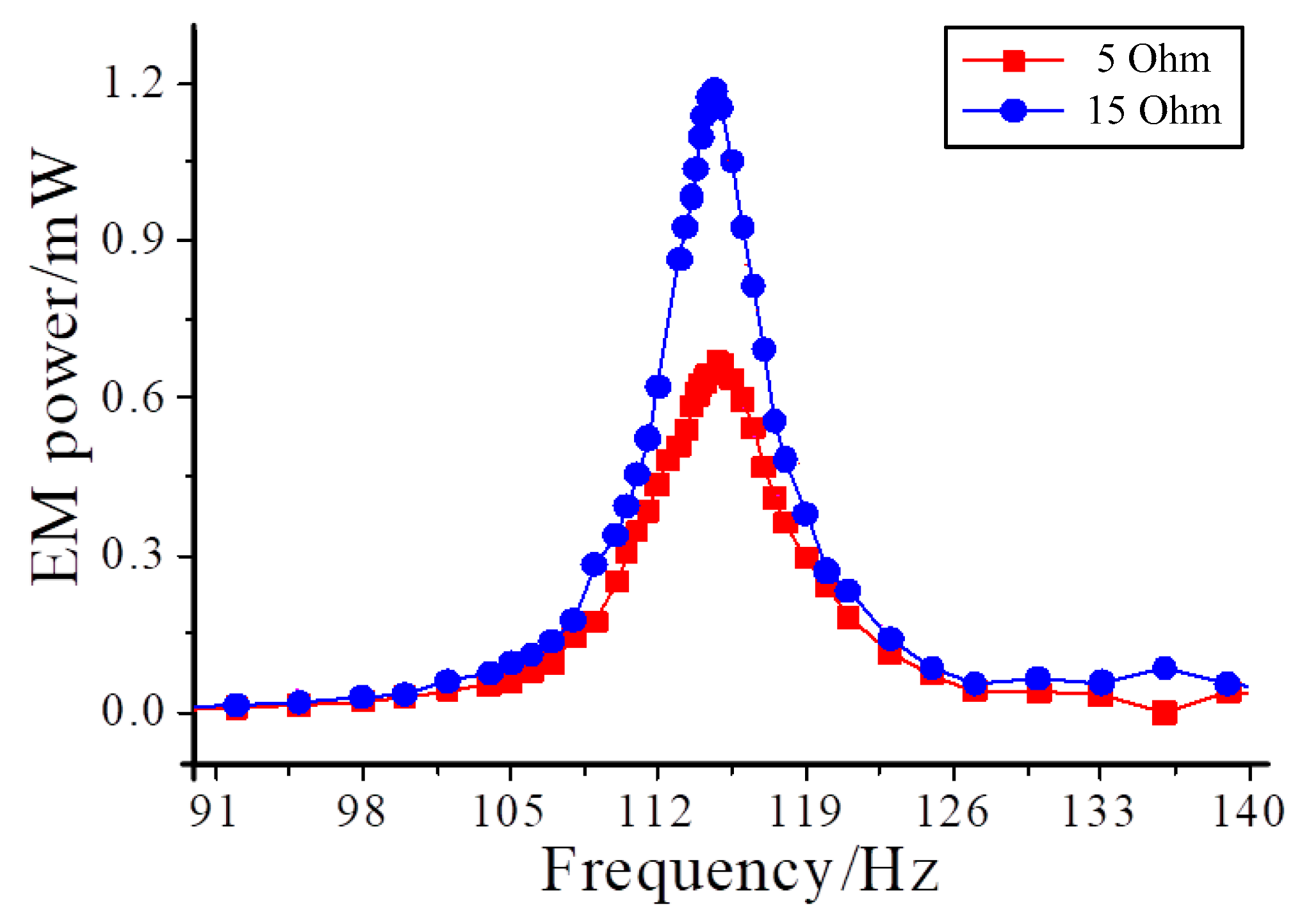
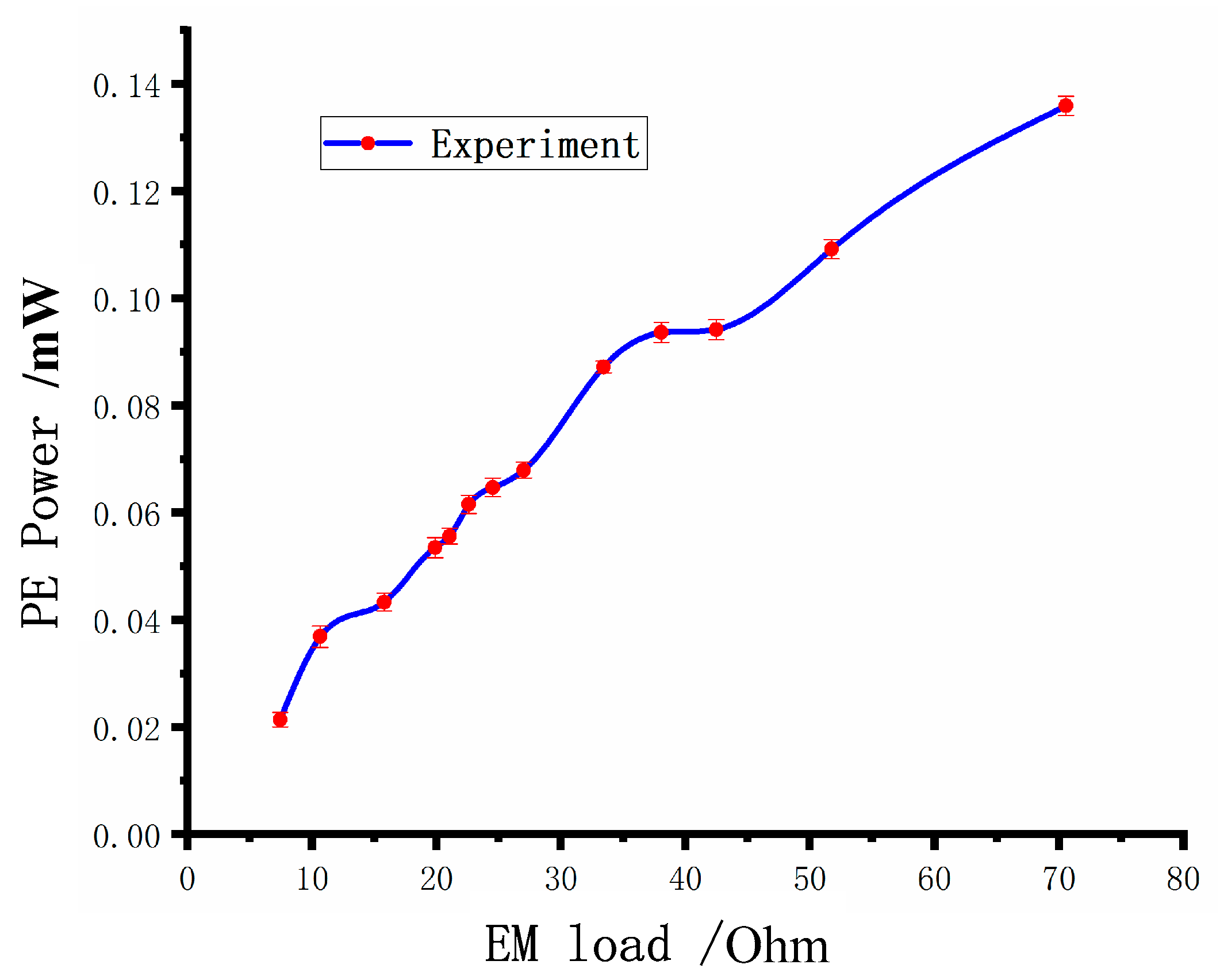


© 2019 by the authors. Licensee MDPI, Basel, Switzerland. This article is an open access article distributed under the terms and conditions of the Creative Commons Attribution (CC BY) license (http://creativecommons.org/licenses/by/4.0/).
Share and Cite
Liu, H.; Gao, S.; Wu, J.; Li, P. Study on the Output Performance of a Nonlinear Hybrid Piezoelectric-Electromagnetic Harvester under Harmonic Excitation. Acoustics 2019, 1, 382-392. https://doi.org/10.3390/acoustics1020021
Liu H, Gao S, Wu J, Li P. Study on the Output Performance of a Nonlinear Hybrid Piezoelectric-Electromagnetic Harvester under Harmonic Excitation. Acoustics. 2019; 1(2):382-392. https://doi.org/10.3390/acoustics1020021
Chicago/Turabian StyleLiu, Haipeng, Shiqiao Gao, Junru Wu, and Ping Li. 2019. "Study on the Output Performance of a Nonlinear Hybrid Piezoelectric-Electromagnetic Harvester under Harmonic Excitation" Acoustics 1, no. 2: 382-392. https://doi.org/10.3390/acoustics1020021
APA StyleLiu, H., Gao, S., Wu, J., & Li, P. (2019). Study on the Output Performance of a Nonlinear Hybrid Piezoelectric-Electromagnetic Harvester under Harmonic Excitation. Acoustics, 1(2), 382-392. https://doi.org/10.3390/acoustics1020021




